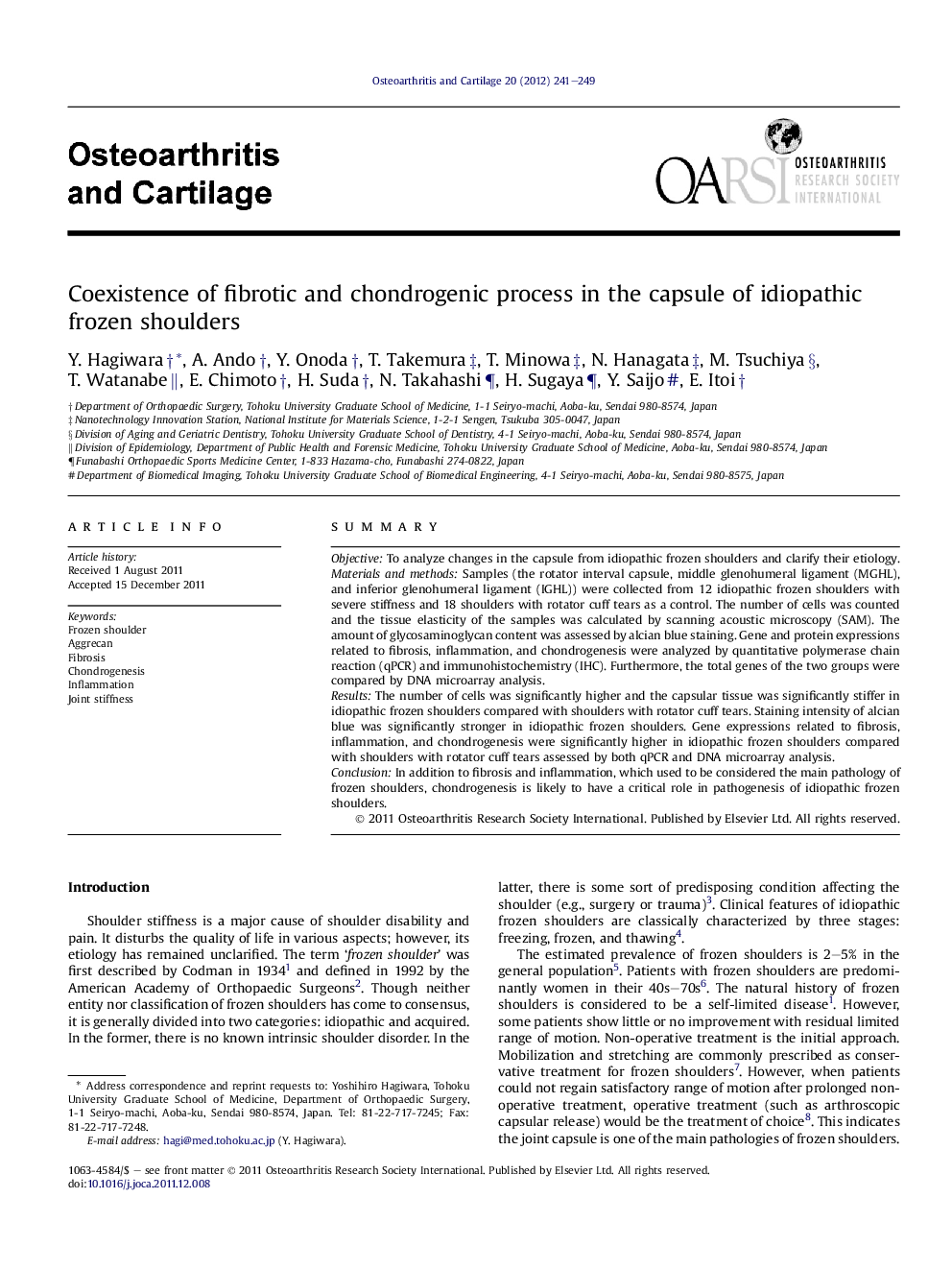| Article ID | Journal | Published Year | Pages | File Type |
|---|---|---|---|---|
| 3379982 | Osteoarthritis and Cartilage | 2012 | 9 Pages |
SummaryObjectiveTo analyze changes in the capsule from idiopathic frozen shoulders and clarify their etiology.Materials and methodsSamples (the rotator interval capsule, middle glenohumeral ligament (MGHL), and inferior glenohumeral ligament (IGHL)) were collected from 12 idiopathic frozen shoulders with severe stiffness and 18 shoulders with rotator cuff tears as a control. The number of cells was counted and the tissue elasticity of the samples was calculated by scanning acoustic microscopy (SAM). The amount of glycosaminoglycan content was assessed by alcian blue staining. Gene and protein expressions related to fibrosis, inflammation, and chondrogenesis were analyzed by quantitative polymerase chain reaction (qPCR) and immunohistochemistry (IHC). Furthermore, the total genes of the two groups were compared by DNA microarray analysis.ResultsThe number of cells was significantly higher and the capsular tissue was significantly stiffer in idiopathic frozen shoulders compared with shoulders with rotator cuff tears. Staining intensity of alcian blue was significantly stronger in idiopathic frozen shoulders. Gene expressions related to fibrosis, inflammation, and chondrogenesis were significantly higher in idiopathic frozen shoulders compared with shoulders with rotator cuff tears assessed by both qPCR and DNA microarray analysis.ConclusionIn addition to fibrosis and inflammation, which used to be considered the main pathology of frozen shoulders, chondrogenesis is likely to have a critical role in pathogenesis of idiopathic frozen shoulders.
